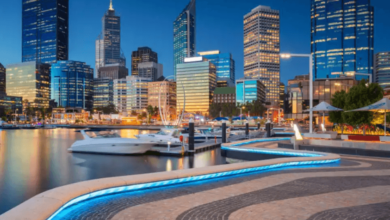Beyond Obstacles: A Keynote On The Art Of Resilience

The capacity to withstand adversity is only one aspect of resilience. It is the quiet strength that allows people to rise above adversity, to adapt in moments of uncertainty, and to keep moving forward when everything feels uncertain. When leaders and keynote speakers address the subject of resilience, they often speak not just of survival, but of growth through challenge. The art of resilience lies in recognizing that obstacles are not dead ends but opportunities to uncover new paths and redefine what is possible.
The Meaning Of Resilience
At its core, resilience is about perspective. It is the recognition that setbacks are not final outcomes but temporary disruptions that demand a response. For many individuals, resilience begins with acknowledging hardship without allowing it to define their entire story. A motivational keynote on resilience emphasizes that life is not free from struggle, but that one’s response to struggle determines the direction forward. Rather than asking why challenges appear, resilient people ask how they can move beyond them.
Stories That Inspire
One of the most powerful ways a keynote speaker communicates resilience is through storytelling. Real-life examples of individuals who faced personal, professional, or even global adversity remind audiences that resilience is a shared human trait. Whether it is the story of an athlete who overcame injury, a business leader who rebuilt after failure, or a community that united after disaster, these narratives highlight the universal nature of resilience. These narratives inspire listeners to view their own difficulties as chances to grow stronger rather than as burdens.
Resilience In The Workplace
In professional settings, resilience has become one of the most valued qualities. Teams face constant change, shifting markets, and unexpected challenges. A keynote on resilience underscores the importance of adaptability and persistence in achieving long-term success. Employees who can maintain focus and energy in the face of disruption contribute not only to their own well-being but also to the stability of the organization. Leaders who model resilience foster a culture where setbacks become fuel for creativity rather than reasons for defeat. This mindset can transform workplaces into environments where growth is sustained even during difficult times.
See also: Why Nutrition Counseling Is Essential for a Healthy Lifestyle
The Emotional Foundation
Resilience is often thought of as toughness, but it is equally about emotional balance. A keynote speaker may emphasize the importance of managing stress, building emotional awareness, and nurturing supportive relationships. Resilient individuals do not suppress emotions; instead, they learn to navigate them in ways that strengthen their capacity to recover. By fostering hope, practicing gratitude, and seeking connection, people develop an emotional foundation that helps them withstand life’s inevitable storms. These qualities create the space not only for recovery but also for renewal.
The Growth That Follows Adversity
Adversity often feels overwhelming in the moment, yet many people look back on challenges as pivotal periods of growth. This transformation is a central theme in any keynote on resilience. Struggles teach patience, resourcefulness, and self-belief. They reveal hidden capacities that may have remained dormant without the pressure of hardship. For organizations, difficult times can drive innovation, force new solutions, and strengthen collaboration. For individuals, obstacles can deepen character and build lasting confidence. Growth after adversity is not automatic but emerges when people choose to learn and adapt rather than resist change.
The Role Of Hope
Hope is one of the most powerful drivers of resilience. It is the belief that tomorrow can be better than today and that effort is worth pursuing despite uncertainty. A keynote on resilience often reminds audiences that hope is not blind optimism but a deliberate choice to focus on possibility rather than limitation. When individuals or teams hold onto hope, they remain motivated to keep striving even in the darkest moments. This outlook keeps resilience alive and allows people to see beyond obstacles to the potential waiting on the other side.
A Call To Action
The art of resilience is not about avoiding difficulty but about embracing it as part of the human journey. A keynote on this subject leaves audiences with the reminder that resilience is not reserved for a few extraordinary individuals. It is a skill that can be practiced, nurtured, and strengthened by anyone willing to face challenges with courage and openness. Every setback, large or small, becomes an invitation to grow. Every obstacle offers the possibility of a new perspective. Resilience, then, is not a destination but an ongoing practice of rising beyond obstacles and creating meaning out of difficulty.
Final Thoughts
Resilience is the bridge between challenge and opportunity. It is the art of moving forward when the path is unclear, the strength to keep going when circumstances test endurance, and the wisdom to turn obstacles into stepping stones. A keynote on resilience reminds us that adversity is not an interruption to life’s journey; it is part of the journey itself. Those who cultivate resilience learn not only to survive but also to thrive, discovering that beyond obstacles lies the strength to shape a better future.




